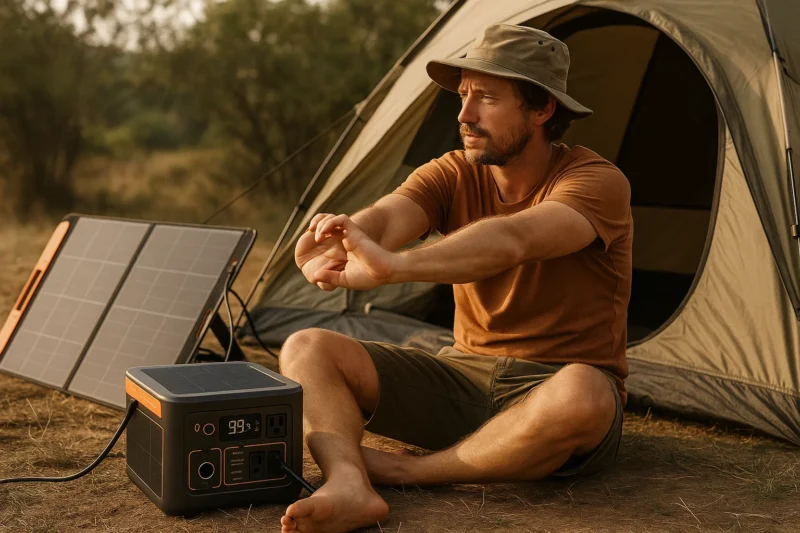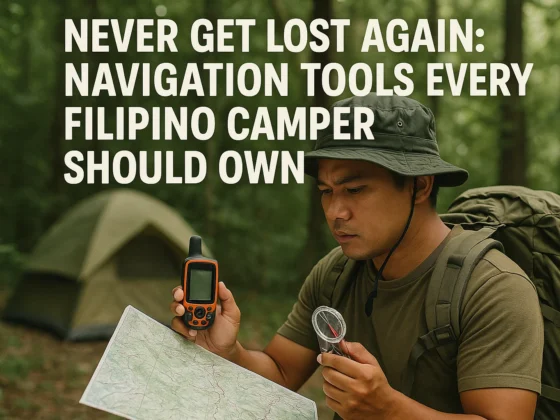Modern camping isn’t just about tents and trail mix anymore. From navigation devices and cameras to portable fans and coffee makers, today’s campers carry a growing number of electronics. And while these gadgets enhance comfort, convenience, and safety, they all share one thing: they rely on power.
For campers staying off-grid for more than a night or two, conserving energy becomes critical. Whether you’re exploring remote campsites in Luzon, camping beachside in Mindoro, or trekking through the Visayas highlands, your trip can quickly go from liberating to frustrating if your devices run out of juice.
This article explores practical energy-saving tips, gear habits, and charging solutions—including the role of a portable power station—to help you make the most of every watt, no matter how long you’re off the grid.
Know Your Power Priorities
The first step to conserving energy on long trips is to know what actually needs it.
Essential Devices:
-
Smartphone (for GPS, communication, emergencies)
-
Headlamp or flashlight
-
Navigation tools (GPS unit, compass apps)
-
Power bank or power station
Nice-to-Haves:
-
Camera or action cam
-
Portable fan or mini air-cooler
-
Bluetooth speaker
-
E-reader or tablet
Non-Essentials:
-
Hair dryers or electric razors
-
Gaming consoles
-
Heavily backlit gadgets
By organizing your devices this way, you’ll know where to channel your limited power resources first—and what can wait or be left behind entirely.
Pre-Trip Prep: Start Fully Charged and Fully Informed
Maximizing energy efficiency starts before you leave for your camping trip. Smart preparation can save you from having to ration power later.
-
Fully charge all your devices, including your power banks and power station.
-
Update firmware and apps beforehand so they don’t auto-update in the wild.
-
Download offline maps, music, or movies ahead of time to reduce mobile data usage.
-
Put all devices in power-saving mode before packing them.
Also, test every charging cable and port. A faulty wire or port can ruin even the most powerful setup.
Smart Usage Habits That Extend Battery Life
You don’t need fancy equipment to make your devices last longer. A few good habits go a long way:
1. Use Airplane Mode
This cuts off background apps and prevents your phone from constantly searching for a signal, which drains battery fast in remote areas.
2. Dim Screens
Turn down screen brightness or enable night mode where possible. Some devices even have outdoor viewing modes that are more battery-efficient.
3. Power Off When Not in Use
It seems obvious, but it’s often forgotten. If you’re not actively using a device, turn it off instead of just locking the screen.
4. Use Single-Function Gear
Instead of draining your phone battery to use a flashlight, use a standalone LED headlamp. Same goes for GPS—if you have a dedicated device, use it.
5. Charge During the Day
If you have solar charging capabilities, plug in your gear during daylight hours when you’re more active and can monitor charging levels.
The Role of a Power Station: Off-Grid, On-Demand Power
A power station is essentially a high-capacity, rechargeable battery pack with multiple output options—USB, AC, DC, and sometimes even carport and solar inputs. It’s an off-grid camper’s best friend, especially on longer stays.
Key Features to Look For:
-
Capacity (measured in watt-hours): The higher the number, the longer it will last.
-
Multiple outputs: To charge several devices at once.
-
Built-in safety features: Overload, overcharge, and short-circuit protection.
-
Solar input compatibility: For endless renewable charging.
These portable stations are ideal for charging phones, lights, fans, mini coolers, laptops, and even electric cooking gear—without needing a noisy generator or constant sun.
Using a reliable power station means you don’t have to sacrifice comfort or connection, even when you’re camping far from civilization.
Solar Panels: A Long-Term Solution
If you’re camping for several days or planning frequent back-to-back trips, a portable solar panel is worth considering.
-
Portable foldable solar panels are lightweight and designed for campsite use.
-
Pair with a power station to store energy during the day and charge gear overnight.
-
Use panel stands or clips to face them toward direct sunlight at peak hours.
Solar charging is weather-dependent, but in a country with as much sunlight as the Philippines, it can be a reliable backup.
Energy-Efficient Alternatives
For every electronic item you pack, consider whether there’s a low-power or manual version:
-
Solar lanterns instead of electric ones
-
Hand-crank emergency radios
-
Battery-powered fans with long-lasting AA cells
-
Cooking gear with insulated sleeves to reduce boil time
These alternatives help ease the load on your main power bank or station.
Camp Setup for Energy Management
Organize your campsite to make charging and gear access efficient and safe:
-
Designate a charging area inside your tent or tarp-covered space.
-
Elevate devices off the ground to avoid moisture or mud.
-
Store your power station in a dry bag or waterproof box when not in use.
-
Label cords and keep cable ties handy to avoid tangling or misplacing charging lines.
Also, track usage patterns. Some power stations come with digital displays showing how much power you’re drawing in real-time.
Energy Log: Tracking Consumption
One effective habit long-term campers use is keeping an energy log. This can be as simple as jotting down what you charged, when, and how long it lasted. It helps you:
-
Plan your power use better next time
-
Estimate how many hours of power you have left
-
Adjust your habits for future trips
Understanding your own power consumption is key to building a sustainable off-grid setup.
Common Power Drain Mistakes (And How to Avoid Them)
Here are some frequent errors campers make with electronics—and how to dodge them:
-
Overcharging overnight: Unplug devices once full to avoid draining power needlessly.
-
Charging in direct sun: Heat can degrade battery life. Keep gear shaded.
-
Leaving Wi-Fi and Bluetooth on: Turn off when not in use.
-
Charging low-priority devices first: Always prioritize essential tools like GPS or lights.
-
Forgetting adapters or converters: Especially for AC-powered devices with non-USB plugs.
Real-World Scenario: Powering Through a 4-Day Trek
Let’s say you’re on a four-day hike through Mt. Apo. You’ve brought:
-
One smartphone
-
One headlamp
-
One camera
-
A medium-capacity power station
-
A solar panel
By using airplane mode, keeping your headlamp on low mode at night, and charging the power station during lunch breaks under sunlight, you can maintain full function of your essential gear for the entire trip—no panic, no sacrifices, and no dead batteries.
Final Thoughts: Power Wisely, Camp Freely
Staying connected, safe, and comfortable in the wilderness doesn’t mean lugging around heavy generators or sacrificing all electronics. With a little planning, a few smart tools, and a reliable power station, you can camp longer, more comfortably, and with complete confidence.
Energy management isn’t about limiting your experience—it’s about sustaining it. Make each charge count, and the wild will stay as welcoming on Day 5 as it was on Day 1.



